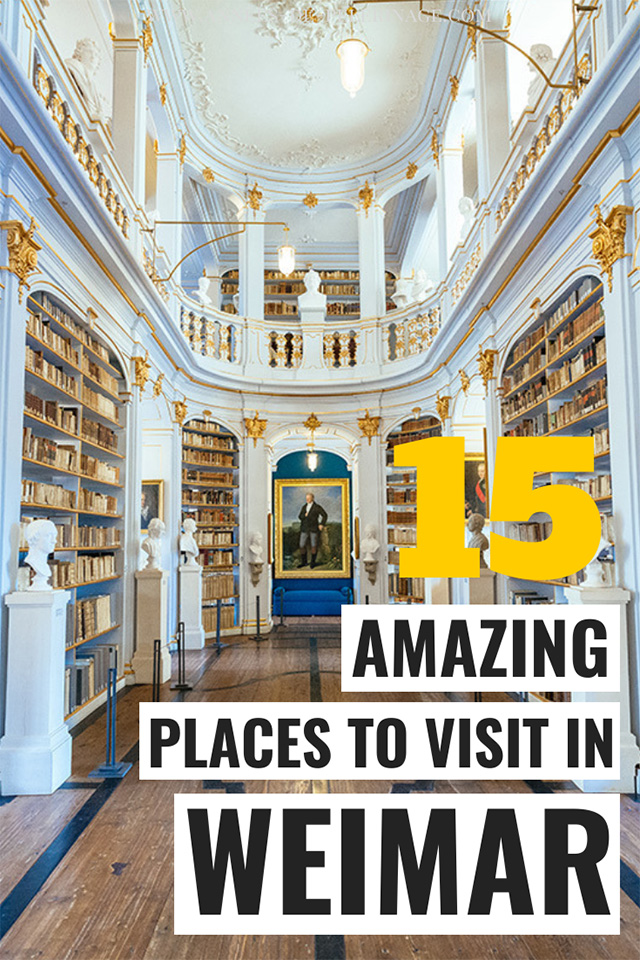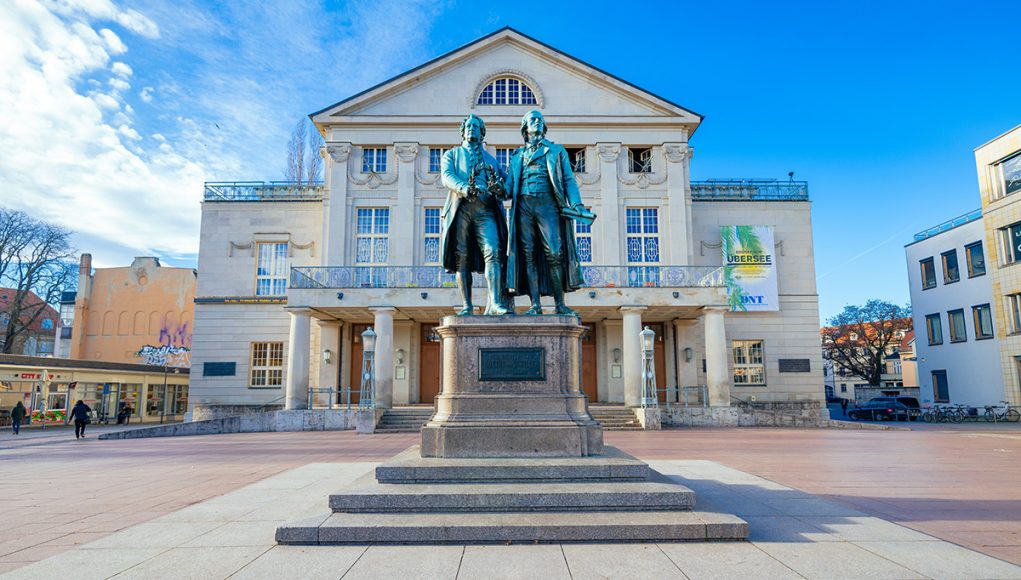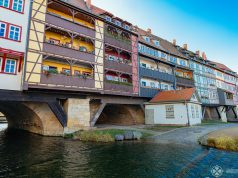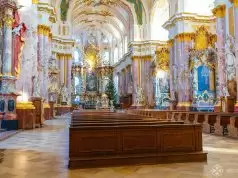All the top tourist attractions and places you need to see when you visit Weimar in Thuringia.
Weimar is one of Germany’s most precious gems. The city may not be as big as Munich, Hamburg or Berlin. It doesn’t have quite as an extraordinary history as Cologne, Augsburg or Mainz. But at the very start of the 19th century, the city turned into one of the beacons of the Age of Enlightenment. Thanks to the patronage of Duke Carl August and Anna Amalia, there are now quite some amazing things to do in Weimar.
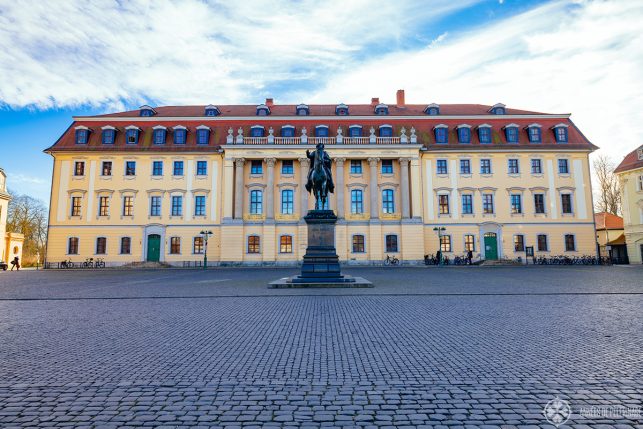
Two of Germany’s most famous writers, Friedrich Schiller and Johann Wolfgang von Goethe, lived and worked in Weimar. Composer Franz Liszt and Richard Wagner lived here, and of course, it is the birthplace of the Bauhaus university which was the leading force behind most of the arts & design changes of the 20th century.
Today Weimar is the home of two UNESCO World Heritage sites and it really deserves to be part of every Germany itinerary – maybe before you visit beautiful Dresden, and after you explored Munich? So, let me show you all the places you need to visit in Weimar:
1. Duchess Anna Amalia Library
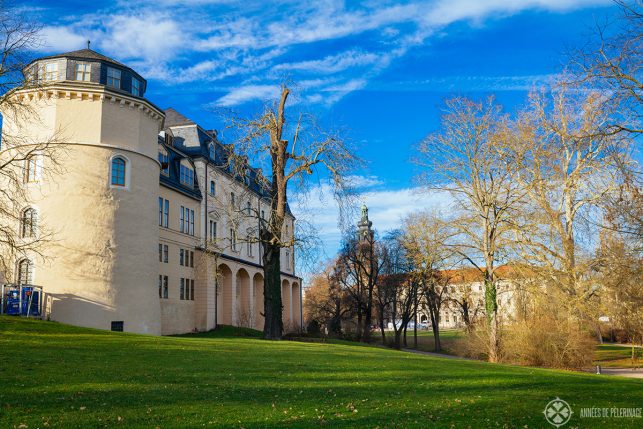
The Herzogin-Anna-Amalia Bibliothek is probably the most important library for books from the Age of Enlightenment and the Late Romantic in the German-speaking countries. The priceless collection was started in 1691 but truly flourished under the patronage of Duchess Anna Amalia, which is the reason it is now named after her.
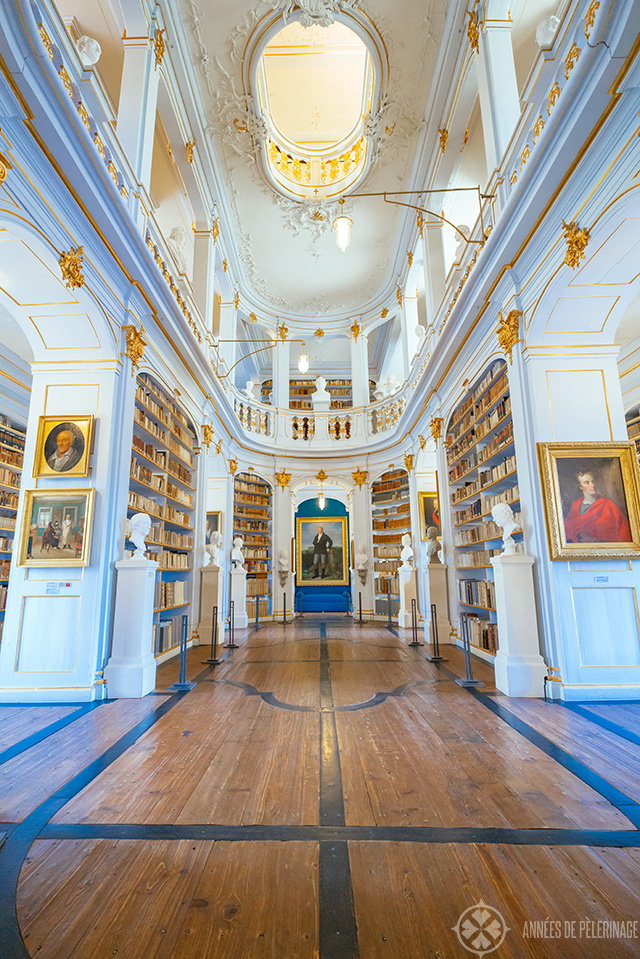
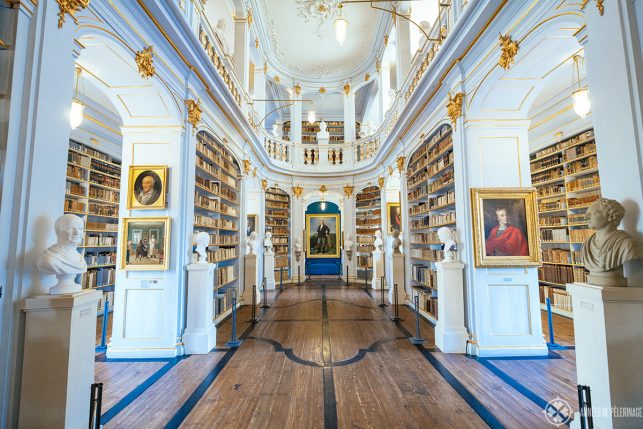
The central Rococo hall (Rokokosaal) is probably what most tourists have on their list of places to visit in Weimar. You cannot peruse the ancient tomes but you can sure marvel at the sheer beauty of the place.
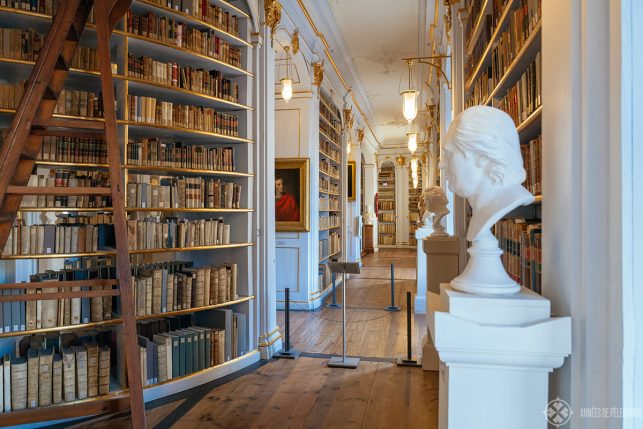
Sadly, the top half of the library burned down in 2004, but everything was reconstructed quite faithfully. These days you’ll find a little exhibition on the ground floor on how they restored the damaged books in the following years. Definitely make sure to visit the adjacent Studienzentrum of the library – which is open to the public.
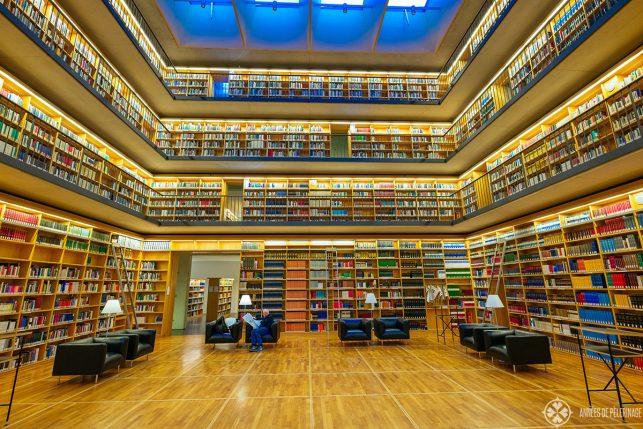
Note: Only a limited amount of visitors is allowed each day. So remember to reserve your tickets for the rococo hall in advance.
2. Schloss Belvedere
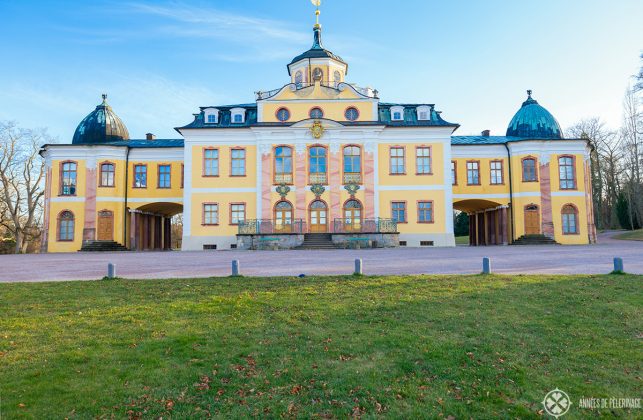
Weimar has a very good public transport network and it really pays off to hop on a bus to the outskirts of the city where you will find Belvedere Palace. The pleasure palace from 1748 is a baroque masterpiece built for Duke Ernst August I and part of the UNESCO World Heritage sites “Classical Weimar” just as the library and eleven other landmarks.
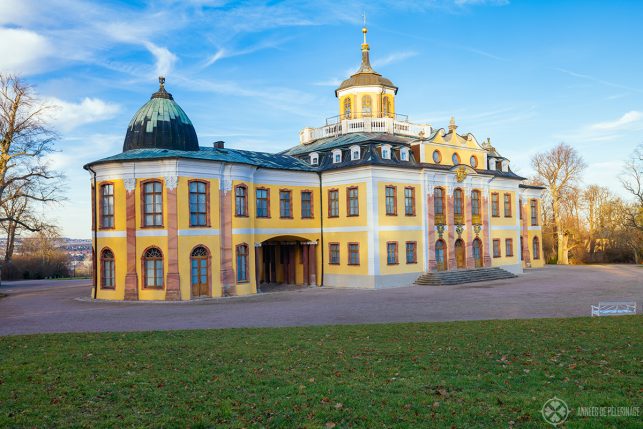
I personally love the beautiful park and it’s definitely a good place to go for a walk. There is a music school in some of the outbuildings, so you’ll hear a piano or a violin playing a ditty ever so often. Quite magical, if you ask me.
Note: The palace is closed in winter, but you can still stroll through the park.
3. Bauhaus Museum
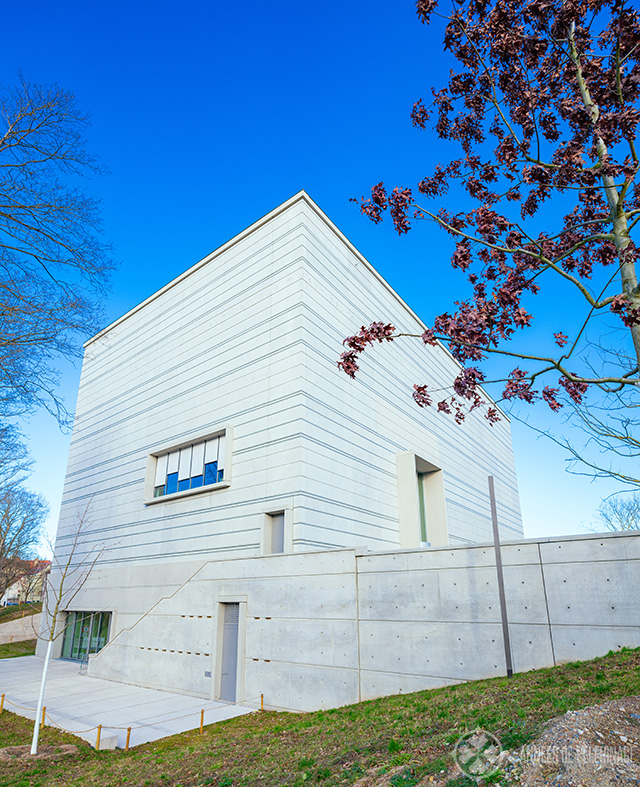
The end of the 19th century was a turning point in human history. While most of the populace was still caught in the throws of Historicism, artists like Walter Gropius and Henry van de Velde tried to expand the previous notion of art and how you’d run an art academy. A first art school was founded in 1907 in Weimar, and then in 1919 the Bauhaus academy finally opened its doors.
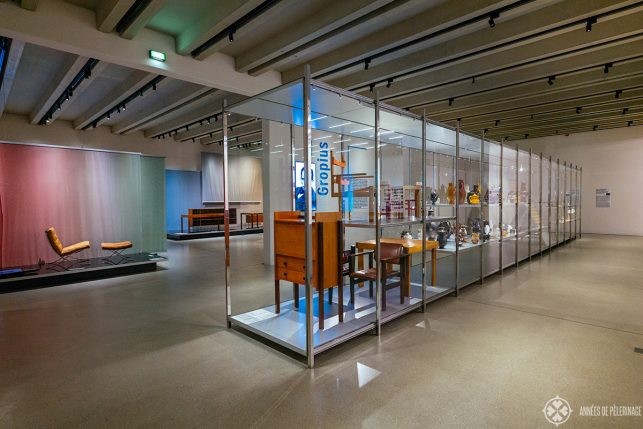
Whether it’s architecture, furniture or even simple things as a tea kettle – we are now used to clean lines and ergonomic design. But back in the 19th century, this couldn’t be farther from the norm. Artists like Mies van der Rohe, Oskar Schlemmer, Lyonel Feininger, and Marcel Breuer paved the way for the modern design we are now used to at the Bauhaus.
The Bauhaus moved to Dessau in 1926, but all the important history lies in Weimar. Together, they form a UNESCO World Heritage site (the second one in Weimar). So, definitely visit the wonderful new Bauhaus Museum where the most important milestones are documented.
4. Goethe’s House & museum
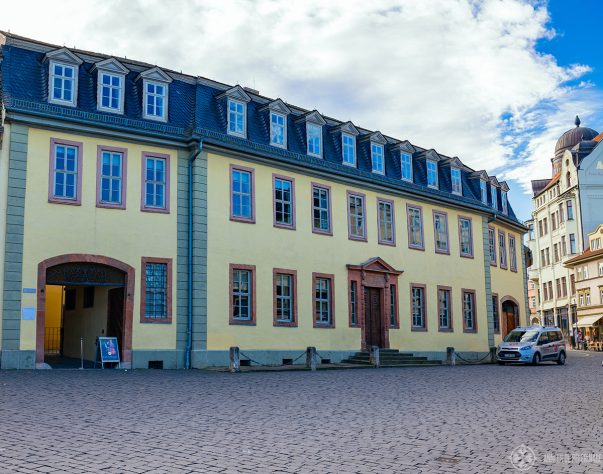
Johann Wolfgang von Goethe – you could not attend a German class without hearing the name at least ones. Quite like Shakespear, he revolutionized German drama and even our language. Everyone in Germany knows Faust or Wilhelm Tell and the elder generation will be able to recite a poem or two for you.
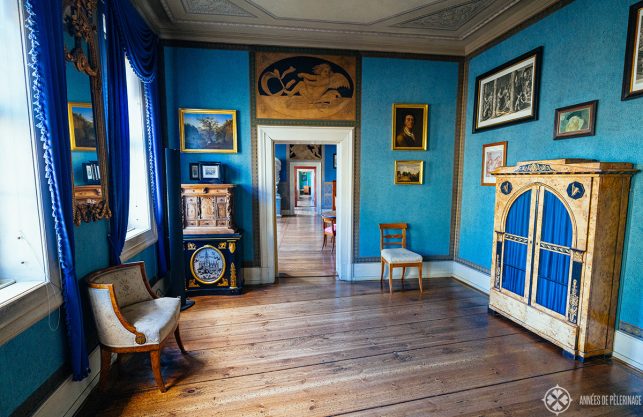
He was, however, not only a poet and writer but also a scientist in the employ of the resident Duke of Weimar. Today, you can visit the former house of the most influential citizen of the city. Because of the immense fame Goethe already acquired during his lifetime, most of his heritage was preserved for the public shortly after his death and everything looks a bit like he only left yesterday.
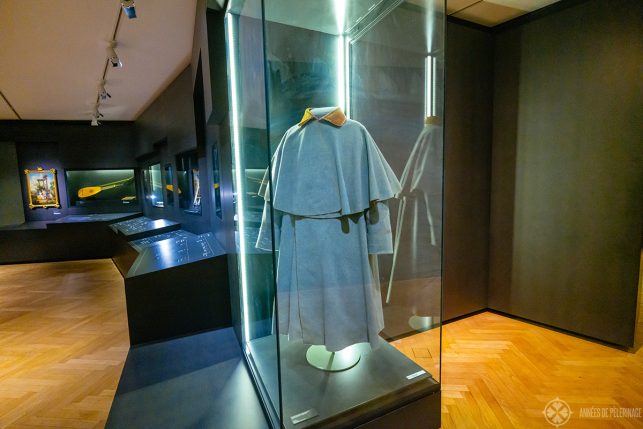
Apart from the old mansion, there is also a museum with important possessions, books, and drawings from his life. Quite fascinating and definitely one of the top highlights in Weimar.
5. Weimar Palace
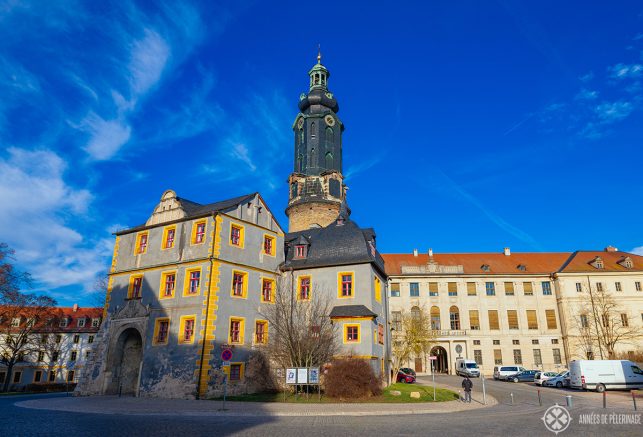
When it comes to political power, Weimar was never really an influential city. For a very short period, it was the capital of Thuringia and it played an important role in the years after World War I, but other than that, it was pretty much a normal duchy in the Holy Roman Empire with a castle that has been modified countless times over the last centuries.
Archeological evidence suggests, that the Thuringii already had a court here in the 6th century, but the current building dates back to the 17th century as the renaissance castle burned down in 1618 and again in 1774. Only the small Bastille gatehouse (which looks somewhat crooked) remains of the original structure. Today there is a museum inside Schloss Weimar.
Note: The castle is currently undergoing extensive renovation works and will be closed until 2023. It’s still beautiful from outside.
6. Schiller’s House
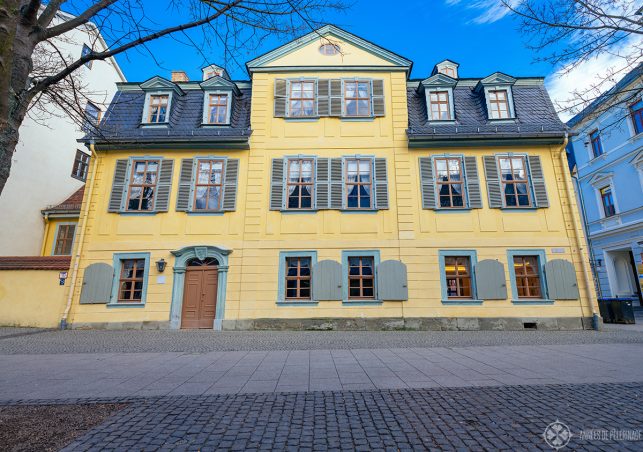
You can’t talk about German literature without mentioning the name Goethe, but his contemporary Friedrich Schiller was almost equally important. They developed a friendship and in 1799 Schiller moved to Weimar where he finished some of his most important works (like Wallenstein).
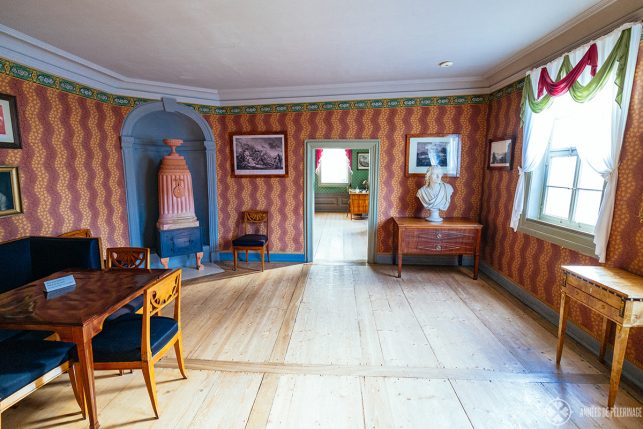
Today, you can visit the house where he lived with his wife and his three children. It’s quite the quaint little place and they even still have the desk where he did most of his writing. There’s also a little museum right next to it which is quite noteworthy as well.
7. Park an der Ilm & Römisches Haus
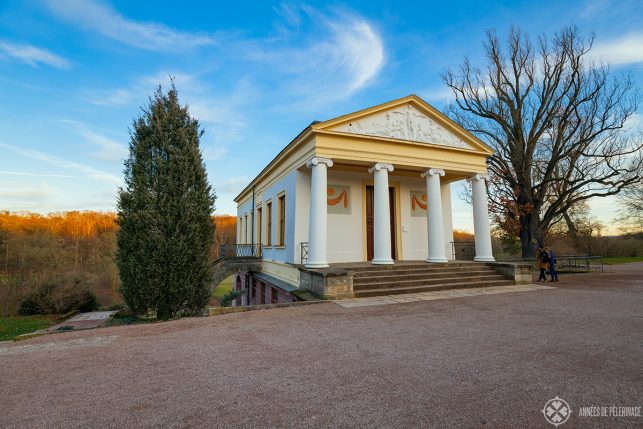
Right behind the Anna Amalia Library and the palace, you will find a magnificent landscape park. Scattered around the park are many bigger and smaller monuments, but you should definitely check out the Roman House. It was the first neoclassic houses to be built in Weimar and none other than Goethe himself had the idea for it.
A porch with white roman collumns, what’s special about that, you might say? But back in 1791, this was indeed quite the novel idea!
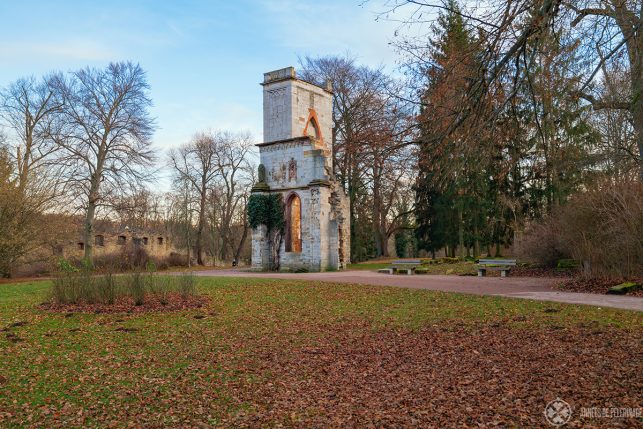
8. Bauhaus University
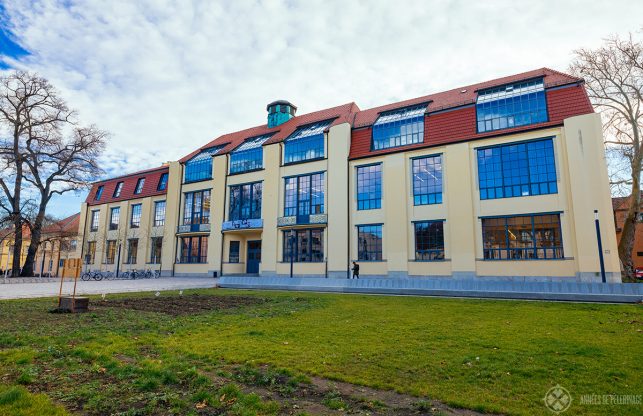
I already mentioned the Bauhaus museum, but the original Bauhaus University still exists in Weimar. It’s a very active university, so don’t be shy and stroll a bit around the campus. Henry van de Velde was the architects behind the historic main complex which was inscribed as a UNESCO World Heritage site in 1996.
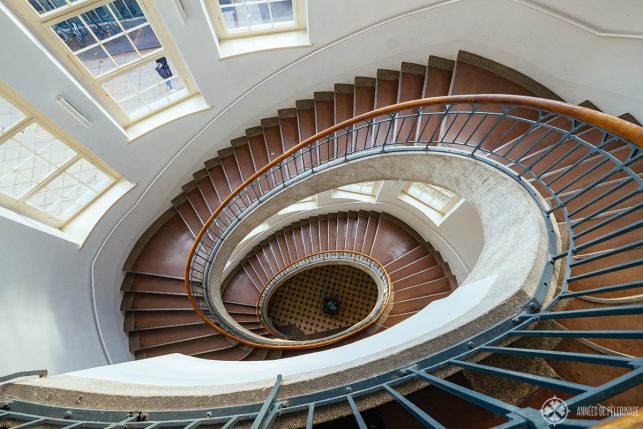
Only one house was finished in the Bauhaus style in Weimar itself. But if you got the time, try visiting the Haus am Horn.
9. Museum für Ur- und Frühgeschichte
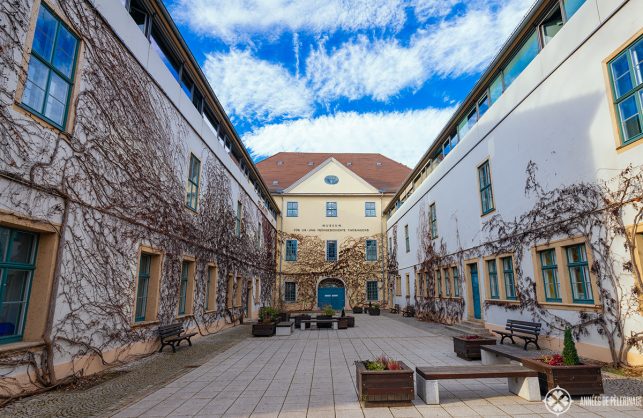
Thuringia has quite a long history. The Museum of Pre- and Early History is probably the best place to visit in Weimar if you want to get an overview of almost 400,000 years of human settlement.
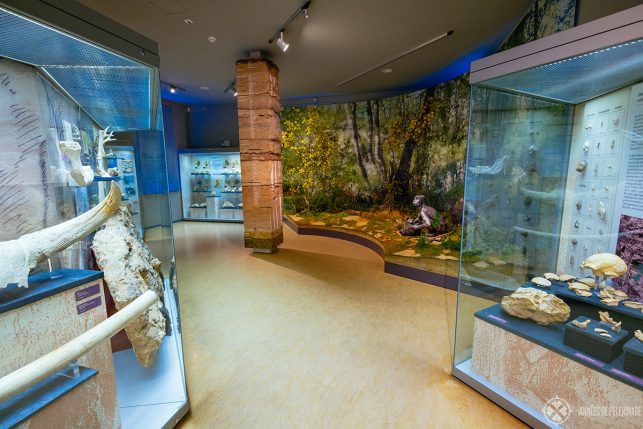
There is a marvelous permanent exhibition inside and they do have some world-renowned finds. Like the artifacts from the Bilzingsleben Homo Erectus or the remains of the proto-Neanderthal. Here is the website.
10. Goethe’s Gardenhouse
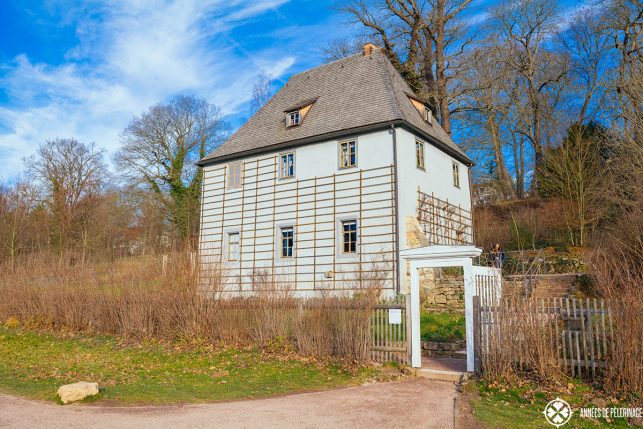
Goethe was a popular man even during his lifetime. This is probably the reason why he bought himself a garden house in 1776 to enjoy some quiet solitude.
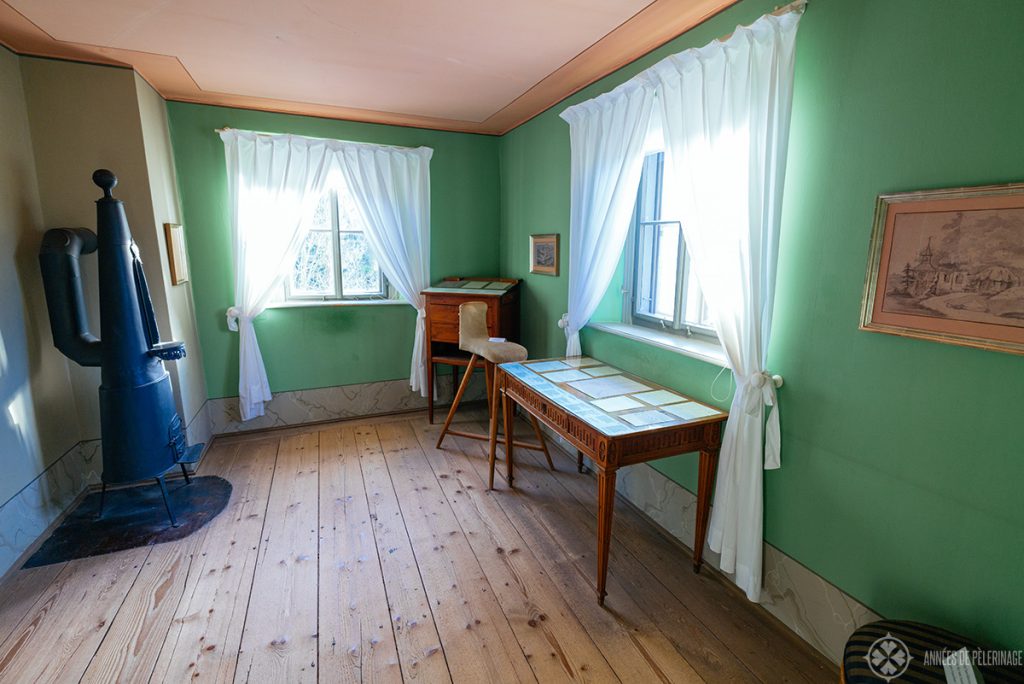
Here, he finished some of his most famous works and the place remained virtually unchanged after his death. The property is bordering to the Park an der Ilm, so you can easily combine visiting the two.
11. Fürstengruft
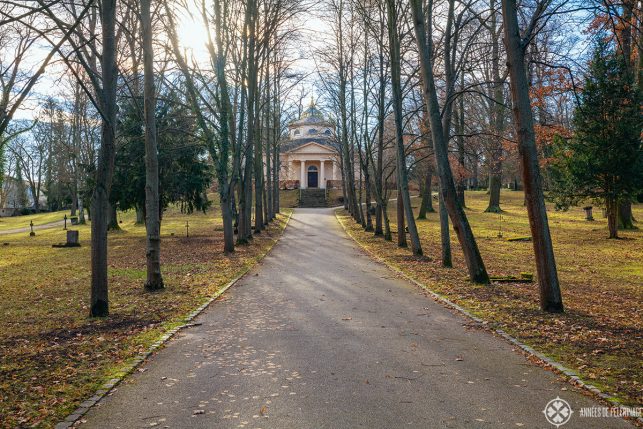
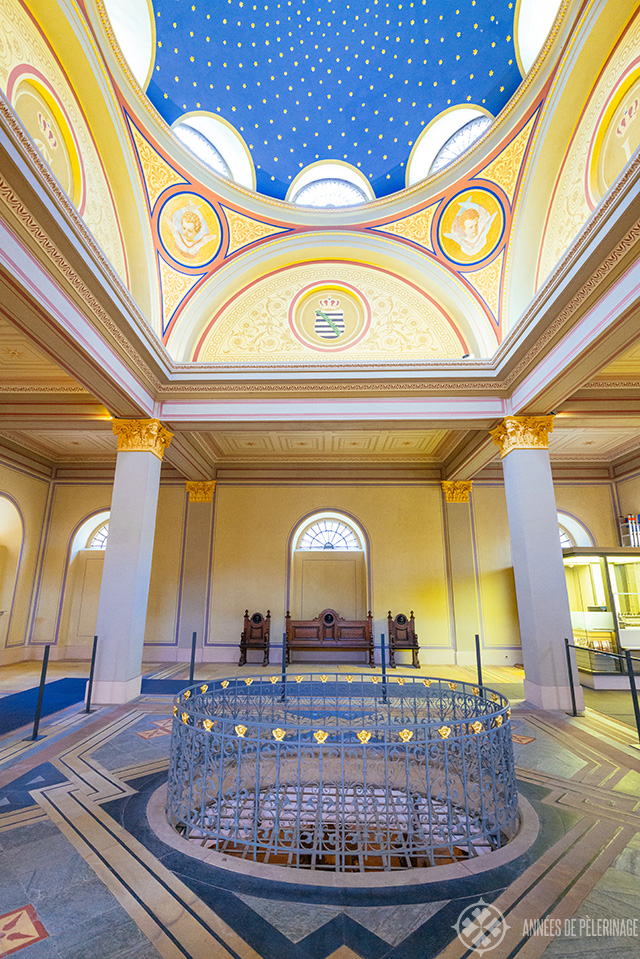
The old cemetery of Weimar is quite a special place. Here you will find a lovely neoclassical burial chapel for the dukes and duchesses of Sachsen-Weimar. It’s also the final resting place of Goethe and Schiller, though the sarcophagus of the latter is empty.
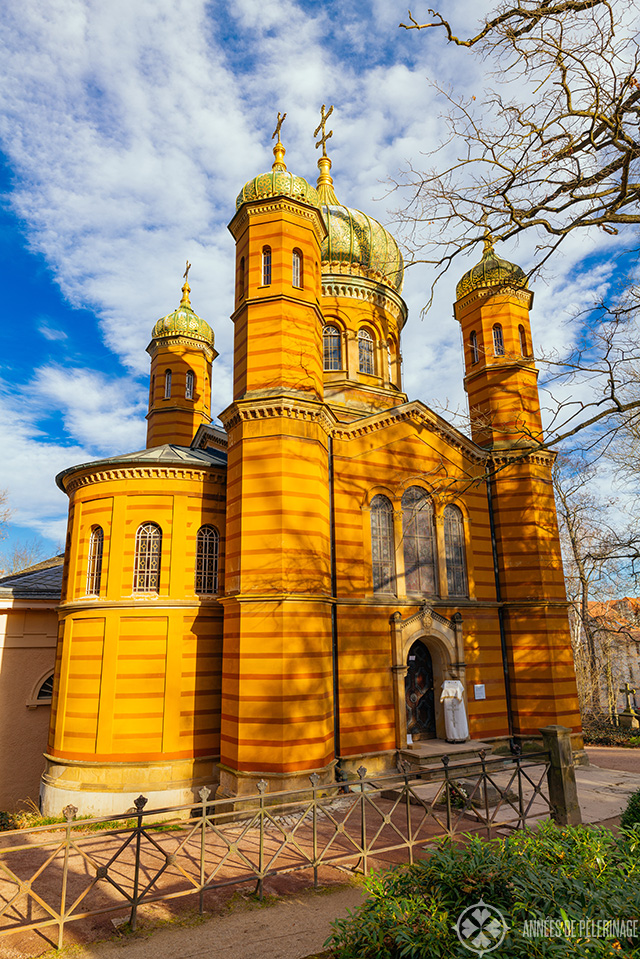
Behind the tomb of the dukes, you’ll find an old Russian Orthodox church which is quite lovely and just another reason why you should visit the cemetery (plus it’s right across the street from the Bauhaus university, so no big detour).
12. Neues Museum Weimar
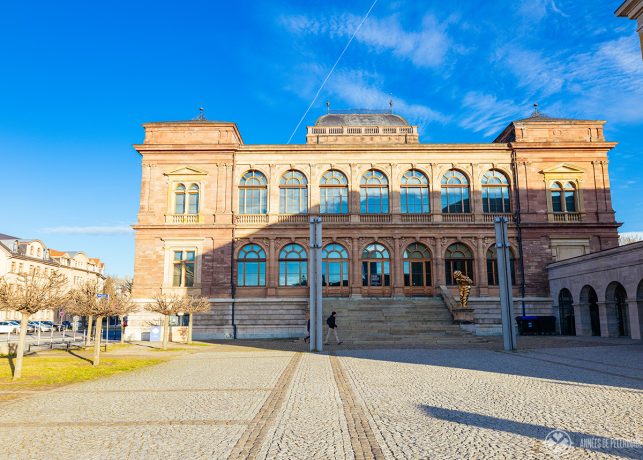
The New Museum Weimar is one of the oldest public German museums (opened in 1869). Sadly, the once glorious building fell into disuse during the DDR period and almost got demolished. In 1999 the Neuw Museum was reopened and ever since April 2019 there is once again a permanent exhibition.
13. House of the Weimar Republic
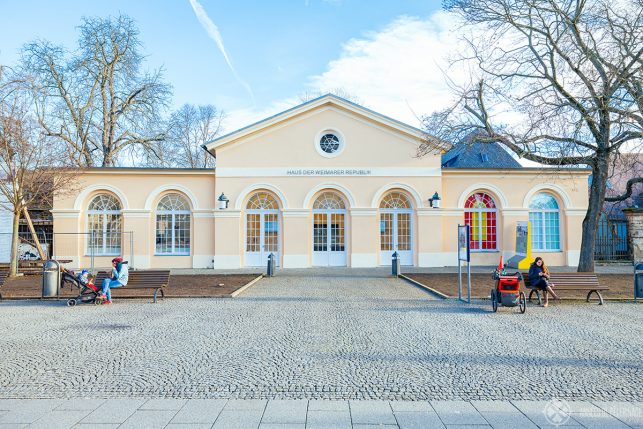
In 1918, after the end of World War I, Germany changed from a constitutional monarchy into a republic. The first assembly met in Weimar’s famous theater (between February 1919 and August 1919) which is why later generations would call this period the Weimar Republic, even though contemporaries kept calling it “Deutsches Reich”.
Opposite the theater, you will now find the new Haus der Weimarer Republik with quite an interesting exhibition about the time between the two world wars.
14. Stadtmuseum Weimar
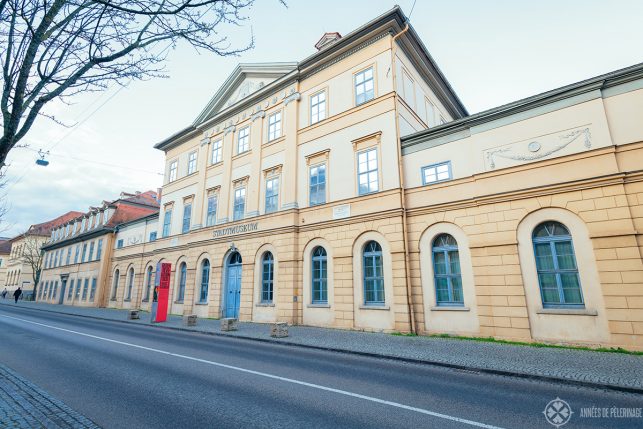
Weimar also has a little city museum. I want to be honest with you: its probably not that interesting for foreigners but I felt this list wouldn’t be complete without it. It tells the history of Weimar in quite a charming way and you’ll get a nice feeling for life in the city in the centuries past.
15. Peter and Paul Church
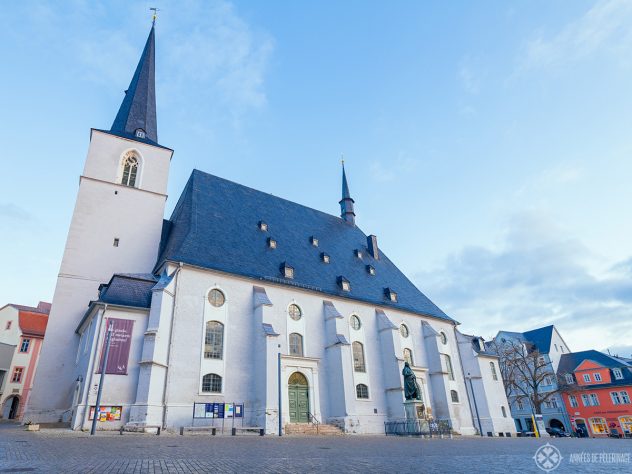
There are a lot of bigger and smaller churches in and around Weimar, but you absolutely have to visit the Peter and Paul church, which is commonly known as Herderkirche. It was consecrated around 1245, but the current building dates to the late 15th century.
[Bonus] Buchenwald Memorial
Buchenwald was one of the largest concentration camps in Nazi Germany on the outskirts of Weimar. Around 56,000 people were murdered here between 1937 and 1945. After that, it was used by the Soviets as a prison and ultimately another 7,000 died until 1950. Today, it is a memorial. Here is the website.
Some practical tips for visiting Weimar
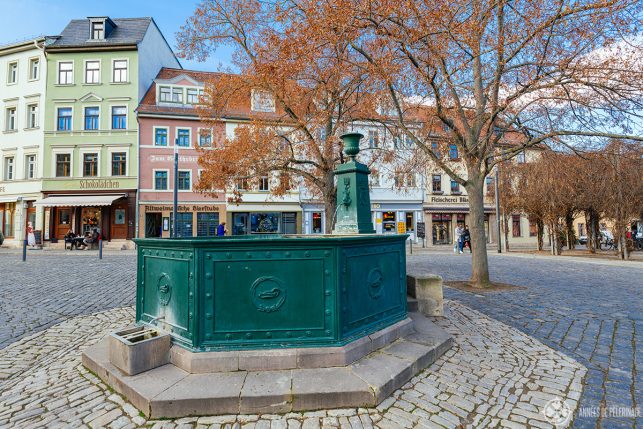
There are quite a lot of fantastic things to see in Weimar, so I do recommend you buying the Weimar Card. It currently costs 32,50 euros, is valid for 48 hours, and public transport and all public museums (except the rococo library) are included. So, it is quite a bargain if you want to visit more than 4 sites.
You will need more than one full day to see it all, and it really makes sense to stay a night. Think about it! There are not a lot of other places with two different UNESCO World Heritage sites on this planet. That being said, you will probably not need the second full day, so you could move on to Erfurt (only 30 minutes by train) in the afternoon.
Weimar has a good bus network, but you’ll end up walking quite a bit, so I do recommend wearing very comfortable walking shoes. Bring a little day pack for some snacks and drinks, though you will have no problem finding a café or restaurant either.
Where to stay in Weimar
Note: I earn a small commission for purchases made through links in this article.
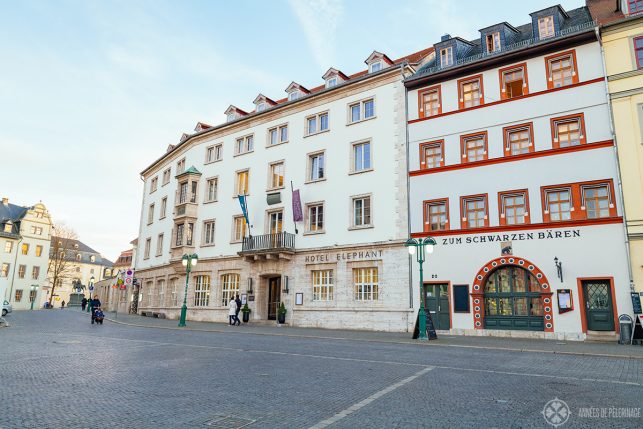
Weimar is a popular destination and there are actually quite a lot of wonderful hotels. My personal favorite place is the Hotel Elephant (book it here). It has quite a long history and some important politicians stayed here (even our infamous dictator Adolf Hitler a couple of times). I loved the impressive lobby and the rooms were quite fantastic as well.
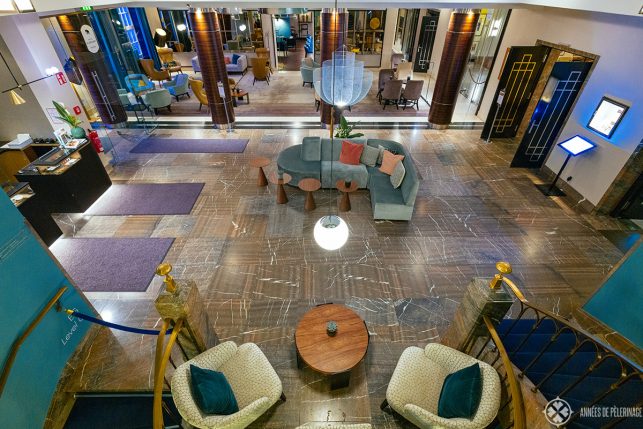
Even if you don’t stay here (prices in Weimar are quite competitive) you should go inside for dinner or even just a drink. The restaurant on the ground floor is quite famous and used to hold a Michelin-star up until 2018.
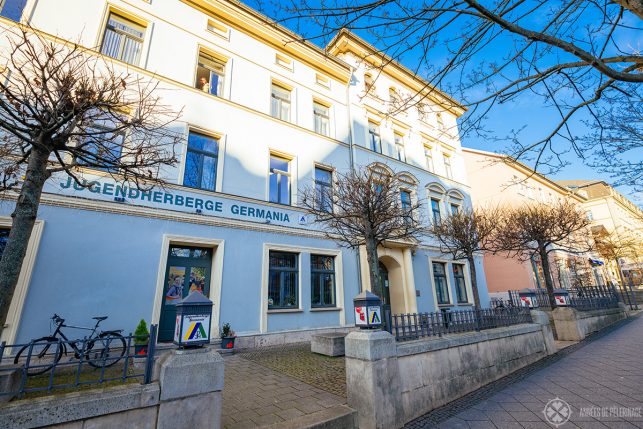
The Dorint Hotel (book it here) is a good alternative if you are looking for a nice comfortable hotel. If you are traveling on a very tight budget, then you could stay at Weimar’s youth hostel.
So, this was my guide to the best things to do in Weimar. I hope you like it and I was able to convince you to visit. Feel free to leave a comment with your questions.
